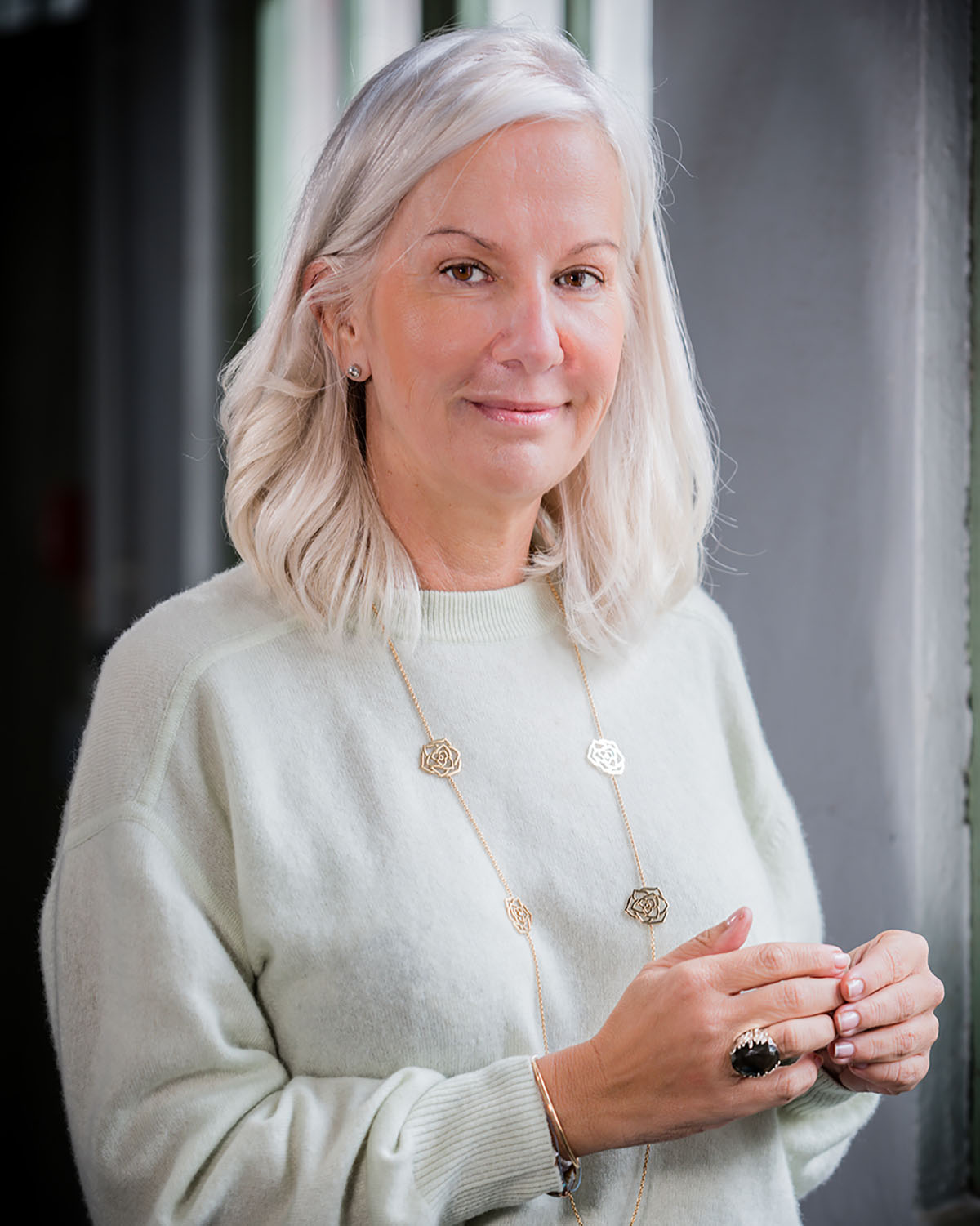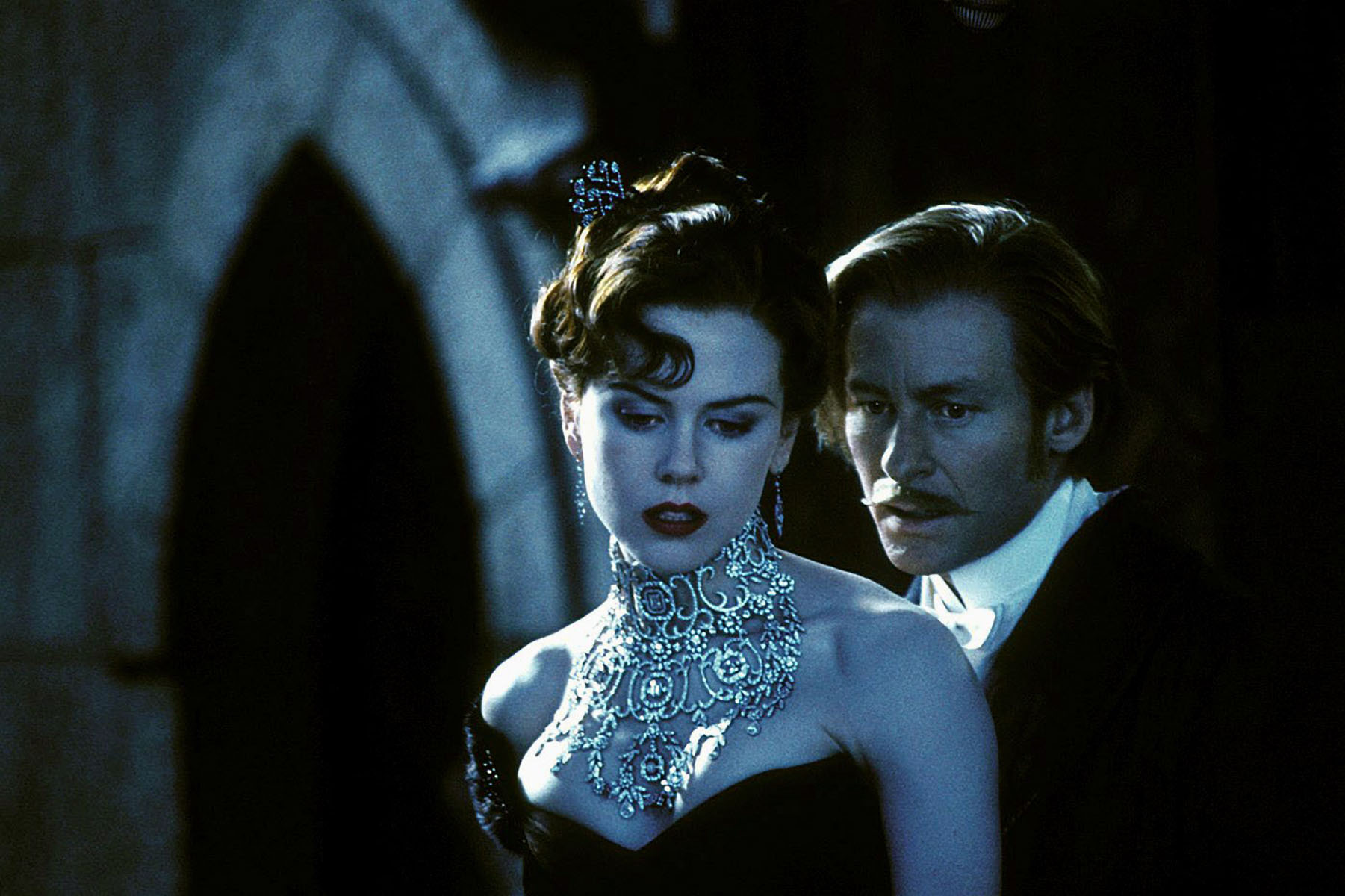In the Diamond Mind: Iris Van der Veken
A conversation with Iris Van der Veken, Executive Director, Responsible Jewellery Council

Photo: Dimitri Pruym
When Iris Van der Veken started her career, she did not see jewelry in it. In fact, she started out in technology. However, jewelry found her and once it did, she fell in love. From witnessing the creation of the marvelous Satine necklace for the movie Moulin Rouge, to leading the Responsible Jewellery Council (RJC) during times of exciting growth, Iris shares how passions like sustainability, women’s rights, gemstones and chocolate have fueled her exciting life journey. The RJC was founded in 2005 with the vision of creating a responsible worldwide supply chain that promotes trust in the jewellery sector. Today, the RJC has more than 1,250 industry companies.
Q: What’s the story of your first diamond?
When I turned 18, my super oma [grandmother], gave me a small diamond pendant. It was something she always wore, and it is very meaningful to me. As my father frequently traveled for work, my super oma was like a second mother. She did not have an easy life, as she was a young widow with three children, and she taught me lessons of courage, resilience and persistence. I often wear the pendant and think of her.
Q: What excites you most at the moment?
The opportunity to contribute to the bigger agenda of the world with our members and stakeholders. In order for the world to shape up, there are some values that are (or should be) non-negotiable. These include a commitment to human rights, fair and environmentally friendly sourcing practices, transparency across the jewelry industry and a set of strong leadership business values. Within the industry, how can we work together throughout the value chain, from mining to retail, to achieve the 17 Sustainability Development Goals? How can we collectively work toward a higher purpose and accelerate development efforts on the ground in the communities where we invest?
Q: What is your intention for the year ahead?
My priority is our Members First Strategy and my team is working diligently on that every day. From a personal perspective, gender equality and inclusion are topics I deeply care about. Action on many fronts is needed by all industries.
I am grateful to be turning 50 at the end of this year. There’s something about this milestone birthday that encourages taking stock. I want to continue my efforts to contribute to the United Nations’ 2030 Agenda for Sustainable Development. Leading the RJC, I have the opportunity to prioritize this topic at an organizational and at an industry level.
Also, I believe there is a significant opportunity in the colored gemstone business, where 85% of mining is artisanal, to educate and to promote responsible business practices through the empowerment of women. During my career, I have learned that change is created through small, steady steps and mentorship is essential. My aim is to continue identifying those steps and work in partnership with other organizations to accelerate action on the ground.
Q: What’s your greatest indulgence?
Chocolate, chocolate and chocolate. I was born and raised in Belgium, the country of chocolate. I always have chocolate at home and some of my favorite traditions surround it. For example, every Saturday morning I visit a local bakery for a chocolate pastry and a double cappuccino. No matter what else is happening in life, when I have my bakery visits, life is tasteful. Fortunately, I also love to run. I run and then I have my chocolate. London has amazing parks. It’s a perfect balance.
Q: What diamond destination is at the top of your list?
India. I had the privilege of spending more than a decade working on the ground in India in factories. The business owners were of the Jain religion, which has a very special, peaceful approach to life. I fell in love with Mumbai and Jaipur. The society is beautiful and vibrant. Two years ago, I received an award for women in leadership in the UAE and the ceremony was held in India. In many ways, my jewelry journey began in India and it continues to be linked to this region through our RJC members.
Q: What inspired you to pursue a career in jewelry?
In a sense, it was my karma, as I started my career in a stock market technology company. When I started working for Rosy Blue, I discovered a whole new world, from jewelry design to manufacturing and retail. I came into the industry at a unique time. The Kimberley Process had recently launched and the mining houses were initiating innovative sustainability programmes, such as the De Beers Best Practice Principles and Rio Tinto Business Excellence Model. I had the opportunity to hold the position of chair of the United Nations Global Compact in Belgium, which taught me a lot about the importance of stakeholder engagement and transformative partnerships. These valuable experiences opened up a bigger world of knowledge about sustainability and the importance of impact. Along the way, I fell in love with the craftsmanship and the magic of jewelry creation.
Q: What moment still blows your mind?
The moments when I have witnessed the art of creating jewelry blow my mind. One example is seeing the “Satine” necklace worn by Nicole Kidman in the movie Moulin Rouge. Rosy Blue sourced the diamonds for that necklace [by designer Stefano Canturi]. Especially coming from a technology background, I was astounded by the many steps that bring such a complex, magnificent piece of jewelry to life.

Q: What life lesson has been the hardest earned, and taught you the most?
A wise woman in India, who will know who she is when she reads this article, told me, “Life gives you many packages, Iris. Some are good and some are bad. You will have to deal with each of them and determine what they become.” We all begin life with certain aspirations and beliefs about the direction our path will take. This quote and my life experiences have taught me the art of being resilient and grateful.
Q: What advice would you give your younger self?
I’m a big fan of Audrey Hepburn. I collect books about her, as well as magnets and well, you don’t even want to know! [Laughs] Beyond being an actress, she was an inspiring person with progressive views on children’s rights and the role of business. The advice I would give is a quote by her, “For beautiful eyes, look for the good in others; for beautiful lips, speak only words of kindness; and for poise, walk with the knowledge that you are never alone.”
I have learned how important it is to let other people join in your journey of purpose. Be positive, but do not shy away from challenging others. My team will tell you that I am a tough and kind cookie. I challenge my team because I want them to grow. It’s also important to laugh and to not take yourself too seriously. Finally, and perhaps most importantly, it’s important to move minds and hearts —to bring people along on your journey and to move in the same direction. It’s only by working together that real transformation happens.
Q: What’s next for diamonds?
The diamond industry has a strong story to tell. While no one can predict the future, at the end of the day, people will always look for ways to express their emotions and to connect with others around life’s milestones.
The younger generation is looking for authenticity and sustainability, and business must stay relevant to its customers. This pandemic has upended millions of lives, and businesses can have a big impact on all consumer behaviour coming out of it. Millennial and Gen Z consumers want companies to take the lead on sustainability efforts. They do not want companies to tell them about their efforts, but to show what they are doing. Also, they are demanding more digital and personalized shopping experiences. They want to understand the story behind the product.
As an industry, we have an opportunity to tell our story and to show people a deeper purpose. Diamonds and colored gemstones contribute to peoples’ lives in ways that are magical. We can show how our product contributes to development on the ground and changes the lives of people working across the supply chain around the world. It does not matter if industry initiatives touch the lives of three, 10 or 5,000 people. What matters is that these initiatives touch and change lives positively.
